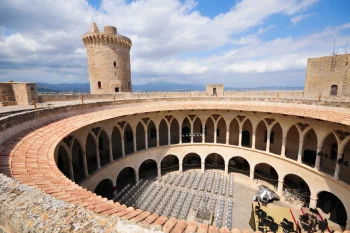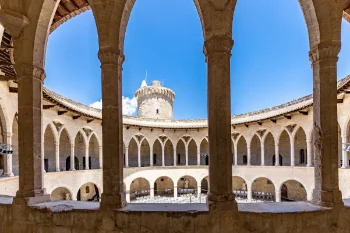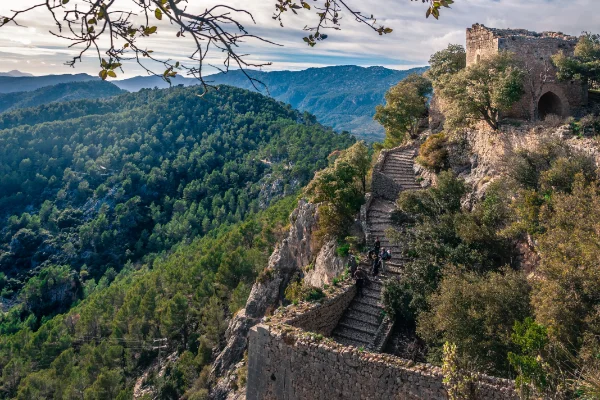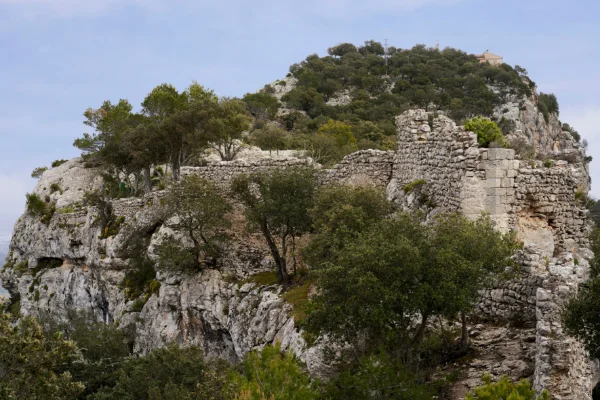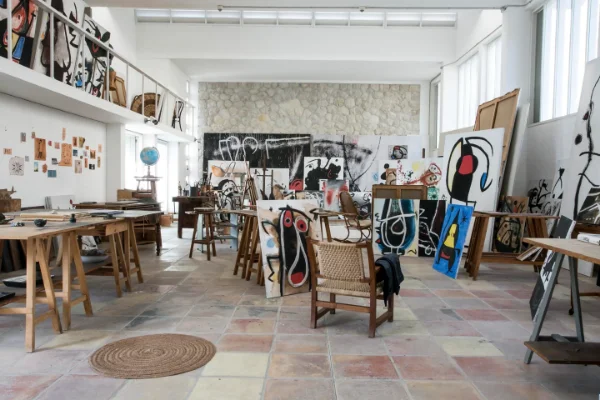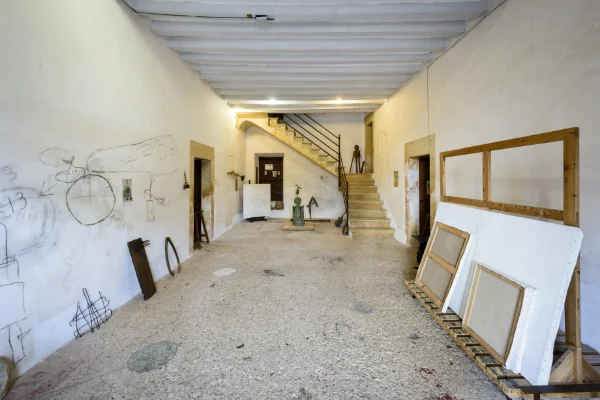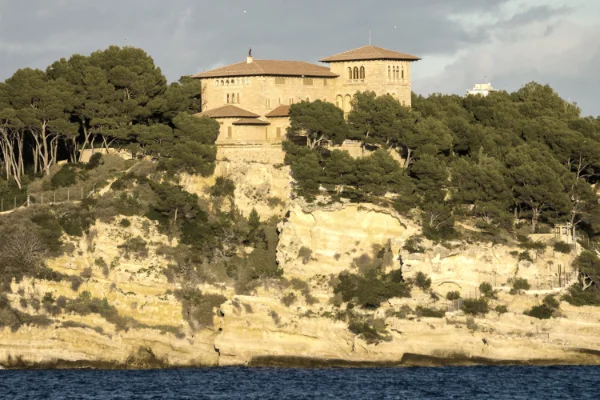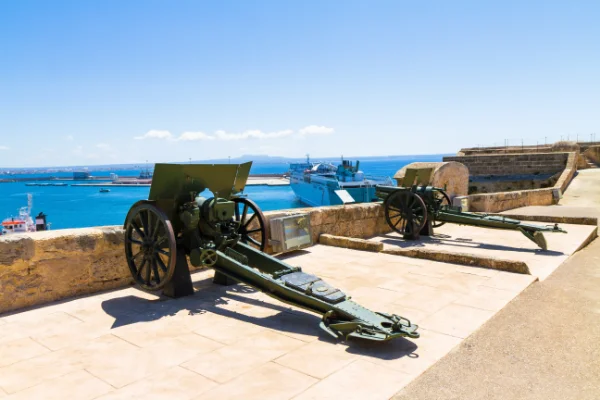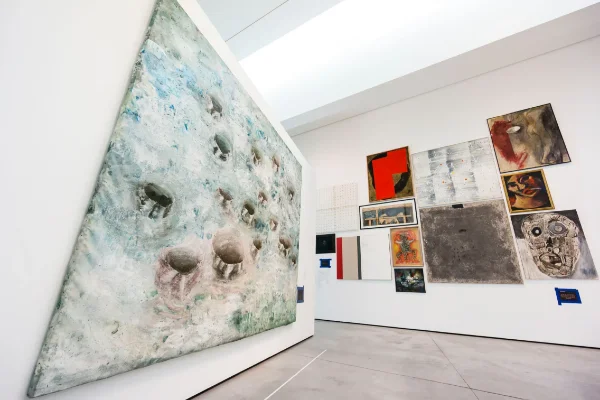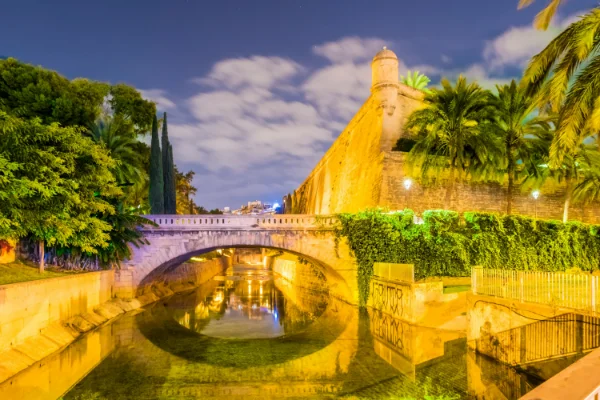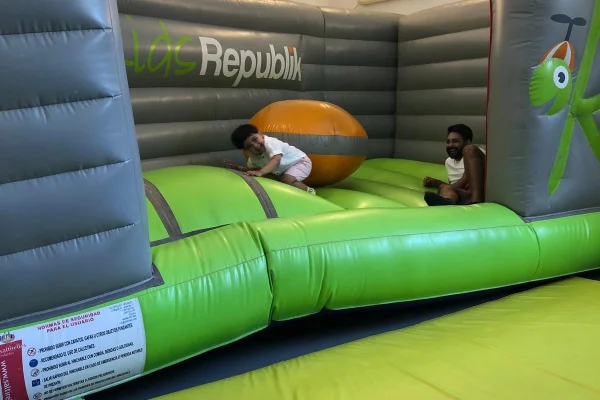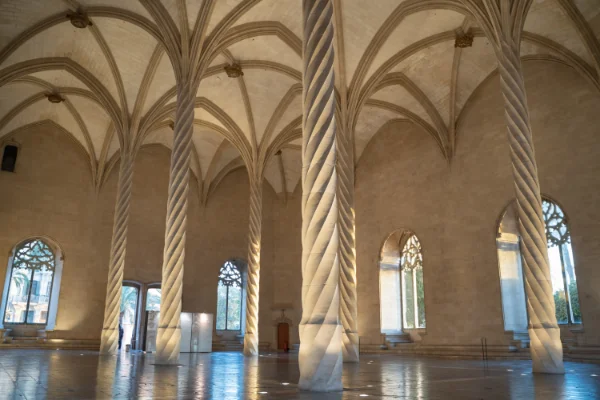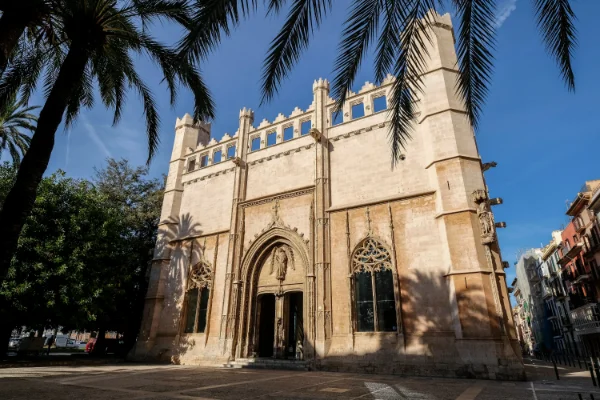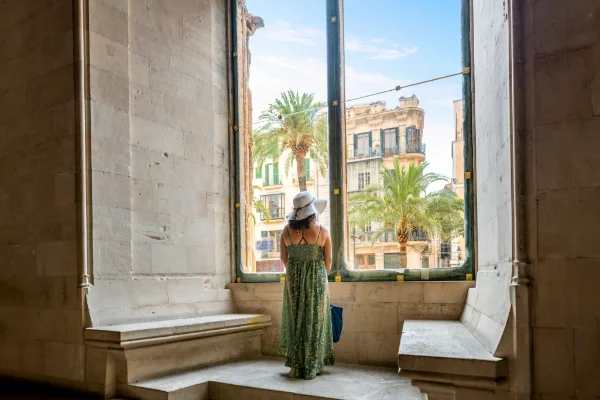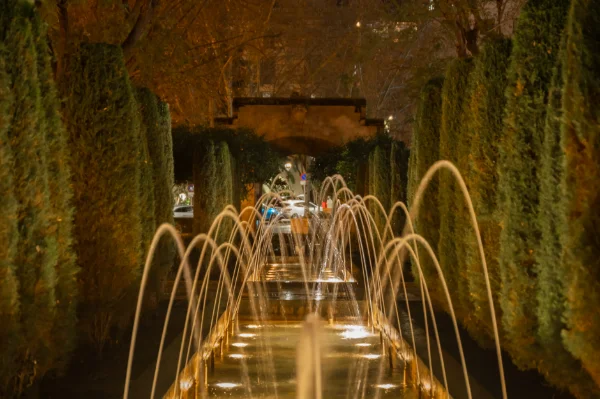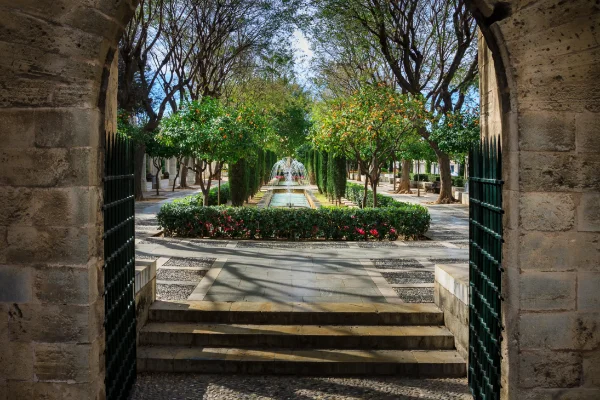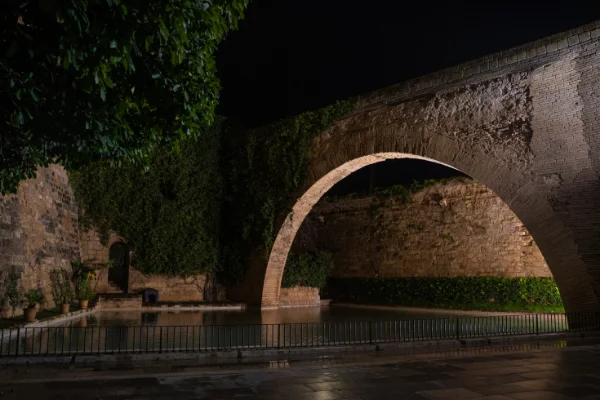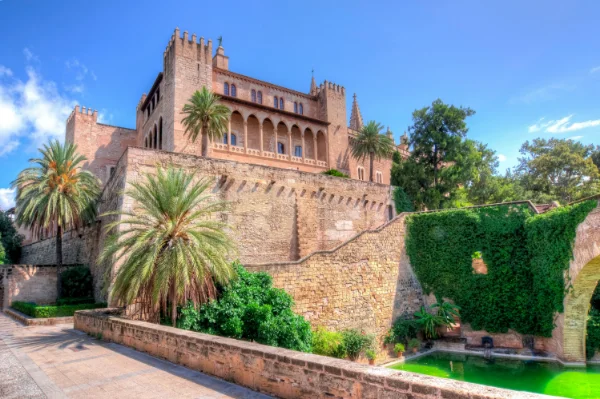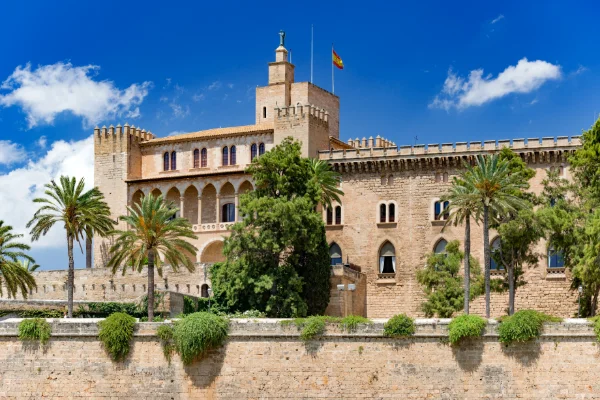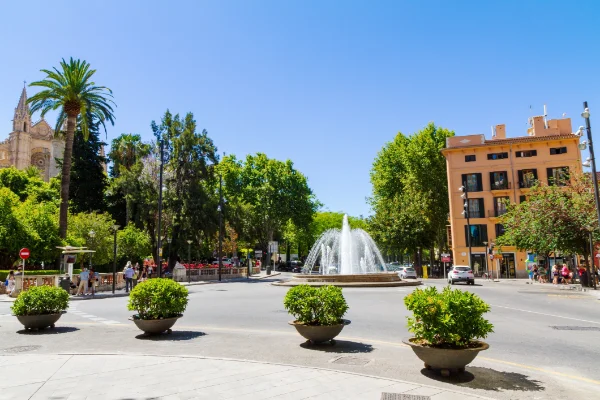Castell de Bellver Palma - Castle
Castell de Bellver
Castle in Palma
Castle in Palma
Description
| Castell de Bellver is a historic castle located in Palma de Mallorca, Spain. It was built in the 14th century by King Jaume II of Majorca as a residence for him and his court. The castle is unique because of its round shape and offers beautiful views of the city and the harbor. It is now open to the public as a museum where visitors can learn about the history of the castle and town. |
Collapse
Alternatives in this category
Also around this location
1
Fundació Miró Mallorca Museum - Palma
Fundació Joan Miró Mallorca is a museum in Mallorca, Spain, dedicated to the Spanish artist Joan Miró. The museum contains a collection of more than 200 works by the artist, including paintings,
2
Porto Pi Centre Comercial Store - Palma
Porto Pi Centro Comercial is a large shopping center in Palma de Mallorca, Spain. It is located in the Portopí district, and is one of the most popular shopping centers in the city. It offers a
3
Palau de Marivent Special buildings - Palma
Marivent Palace is a royal palace in Palma de Mallorca, Spain. The palace was built in 1923 as a summer residence for the Spanish royal family and is still used by the royal family during their sum
4
Far de Portopí Sights - Palma
The Faro de Portopi, or the Portopi Lighthouse, is a lighthouse located near the marina of Palma de Mallorca, the capital of the island of Mallorca. It is one of the oldest working lighthouses in t
5
Museu Històric Militar de Sant Carles Museum - Palma
The San Carlos History Museum (Museu d'Història de San Carlos) is a history museum in Palma de Mallorca, Spain. Housed in a former barracks, the museum provides an overview of Majorca's history
6
Es Baluard Museum - Palma
The Es Baluard Museum is a museum of modern and contemporary art in Palma de Mallorca, Spain. The museum offers a collection of more than 2,000 works of art by Spanish and international artists,
7
Kids Republik indoor playground - Palma
An indoor playground for children where various attractions can be found. Think of slides, bouncy castles, a dance floor and so on.There is a separate area for children between 0 and 2 years old.
8
Llotja de Palma Special buildings - Palma
La Lonja de Mallorca is a historic building in the center of Palma de Mallorca, the capital of the island of Mallorca. Built in the 15th century, it was originally a meeting place for merchants and
9
Jaume III Store - Palma
Jaume III is one of the main shopping streets in Palma de Mallorca, Spain. Running from Plaça Major to Passeig des Born, this street is a popular destination for shopping and entertainment. Many
10
S'Hort del Rei Park - Palma
S'Hort del Rei is a public park located in the center of the city of Palma de Mallorca on the island of Mallorca, Spain. The park is named after the nearby royal gardens (Jardines de S'Hort del Rei
11
Royal Palace of La Almudaina Museum - Palma
The Royal Palace or La Almudaina is a royal palace in Palma de Mallorca, Spain. The palace was built in the 14th century and has a rich history as the residence of the kings of Majorca and later
12
Passeig del Born Shop - Palma
Passeig del Born is a historic and lively boulevard in the center of the city of Palma de Mallorca, the capital of the island of Mallorca. It is one of the most popular streets in the city and a ma
Reviews
There are currently no reviews. Will you be the first?
Frequently asked question about Castle
What function did a castle have in the past?
Castles used to have various functions, such as a (military) refuge or a home for a family or group of people. This distinguishes a castle from a palace (which is not fortified), from a fortress (which is not a residence of a noble) and from a walled city (collective defense).
What is the difference between a palace and a castle?
Today the word 'castle' has a more general meaning. We usually use it to indicate a house of a nobleman. The nobility usually did not live in a fortress or palace, but in a castle. With 'palace' we indicate the residence of a reigning monarch or royal family.
What types of castles are there?
City Castles: This is a noble residence in an average city. It is a defensible tower or house that housed someone important such as a knight or nobleman.
< b>Concentric castle: This kind of castle originated from the crusades. The people in the Crusades encountered such fortresses in the Middle East. In a concentric fortress, the important buildings are located in the middle, in the courtyard. A solid wall or moat has been built around it for defence.
Ringwalburcht: This is one of the oldest kind of castles. This was often a settlement, inn or other building surrounded by an often wooden wall for protection only. So it was not actually a traditional castle as we recognize it today.
What types of castles are there?
Residential tower or donjon: This is a heavily fortified tower that could serve as both a residence and a place of last refuge. The keep was very heavily guarded and difficult to take. Often the keep was used as part of a castle, but there are also examples in which a keep is used as a separate castle.
Motte: A highly secured castle that was built on an excavated hill, giving tactical advantages. A motte was often accompanied by a few Donjons and at the bottom there was often a forecourt with a few stables.
Moated castle or moated castle: One of the most common types of castles. Moated castles are always surrounded by a moat or some other form of water (for example a lake) and have only a few defensive walls as the main defenses. Inside, there was often a courtyard surrounded by outbuildings and the castle.
When can you call a castle a castle?
The two most important conditions for calling a building a castle are ‘habitability’ and ‘defensibility’. Other requirements are that a castle was built before 1800, is located in a non-urban environment, has a knightly character and is the center of a seigneury or large estate.
When were most castles built?
Most castles were built before 1800, if the castle was built after that time, it may not officially be called a castle.
Why do most castles have a moat?
The main task of the moat was to prevent the enemy from approaching the castle or fortress in order to storm the battlements with the help of ladders.
Reviews
We currently do not have any reviews for this activity.
Practical
| Setting | Indoor & Outdoor |
Opening hours
| Monday | Unknown |
| Tuesday | Unknown |
| Wednesday | Unknown |
| Thursday | Unknown |
| Friday | Unknown |
| Saturday | Unknown |
| Sunday | Unknown |
Location
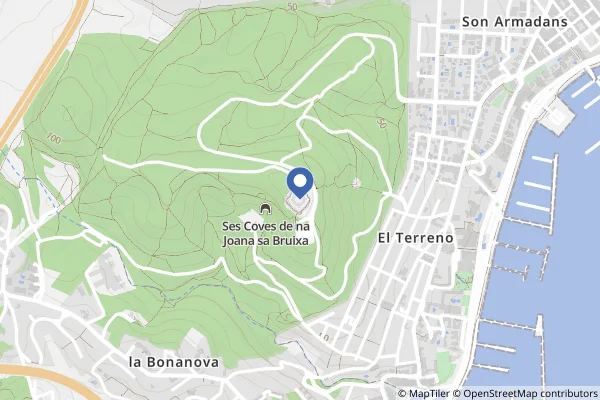
| 8,939.85 km from Denver, United States |
Weather forecasts
CategoryCastle
Auto translated
Knights and damsels, drawbridges, moats and battlements and cannons. Castles always appeal to the imagination. Some castles are still well preserved, others are just ruins. Find out here whether there is a beautiful castle in your area to visit.
More in the category Castle Knights and damsels, drawbridges, moats and battlements and cannons. Castles always appeal to the imagination. Some castles are still well preserved, others are just ruins. Find out here whether there is a beautiful castle in your area to visit.
Contributors



